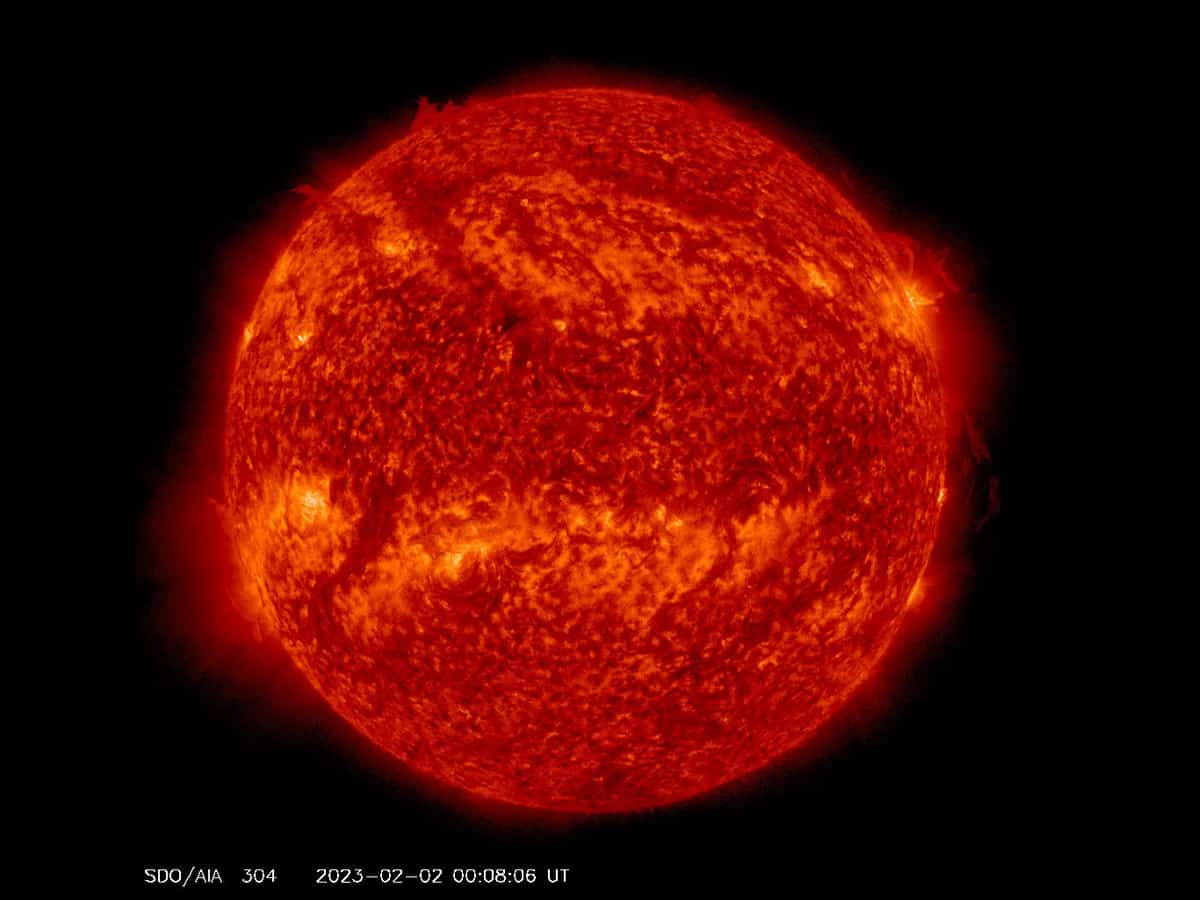
Washington: The Sun did not shed a chunk of it as being reported and what was spotted was a normal “solar prominence” activity on its surface.
A solar prominence (also known as a filament when viewed against the solar disk) is a large, bright feature extending outward from the Sun’s surface.
Prominences are anchored to the Sun’s surface in the photosphere, and extend outwards into the Sun’s hot outer atmosphere, called the corona.
Reports last week surfaced that NASA’s James Webb Space Telescope (JWST) caught “a piece of Sun being broken off” from its surface.
A tweet by astronomer Dr Tamitha Skov, accompanied by footage of the Sun captured by NASA’s Solar Dynamics Observatory, claimed: “Talk about Polar Vortex! Material from a northern prominence just broke away from the main filament & is now circulating in a massive polar vortex around the north pole of our Star”.
However, no part of the Sun “broke off”.
Solar physicist and deputy director at the National Center for Atmospheric Research in Colorado, told Space.com that a prominence like this happens at the same 55-degree latitude every 11 years.
“This vortex has now been cited in many media outlets as “a piece of the Sun breaks off”, but don’t believe the hype. It is all part of the perfectly normal and stunning solar ballet!” Dr Skov wrote on her blog.
The James Webb Space Telescope is the world’s largest, most powerful, and most complex space science telescope ever built. Webb will solve mysteries in our solar system, look beyond distant worlds around other stars, and probe the mysterious structures and origins of our universe and our place in it.
Meanwhile, a major solar flare erupted from the Sun over the last weekend, “spawning a radio blackout for parts of Earth and setting the stage for more flares to come,” reports Space.com.
The huge solar flare was registered as a powerful X1.1-class event on the scale used for such Sun storms.



